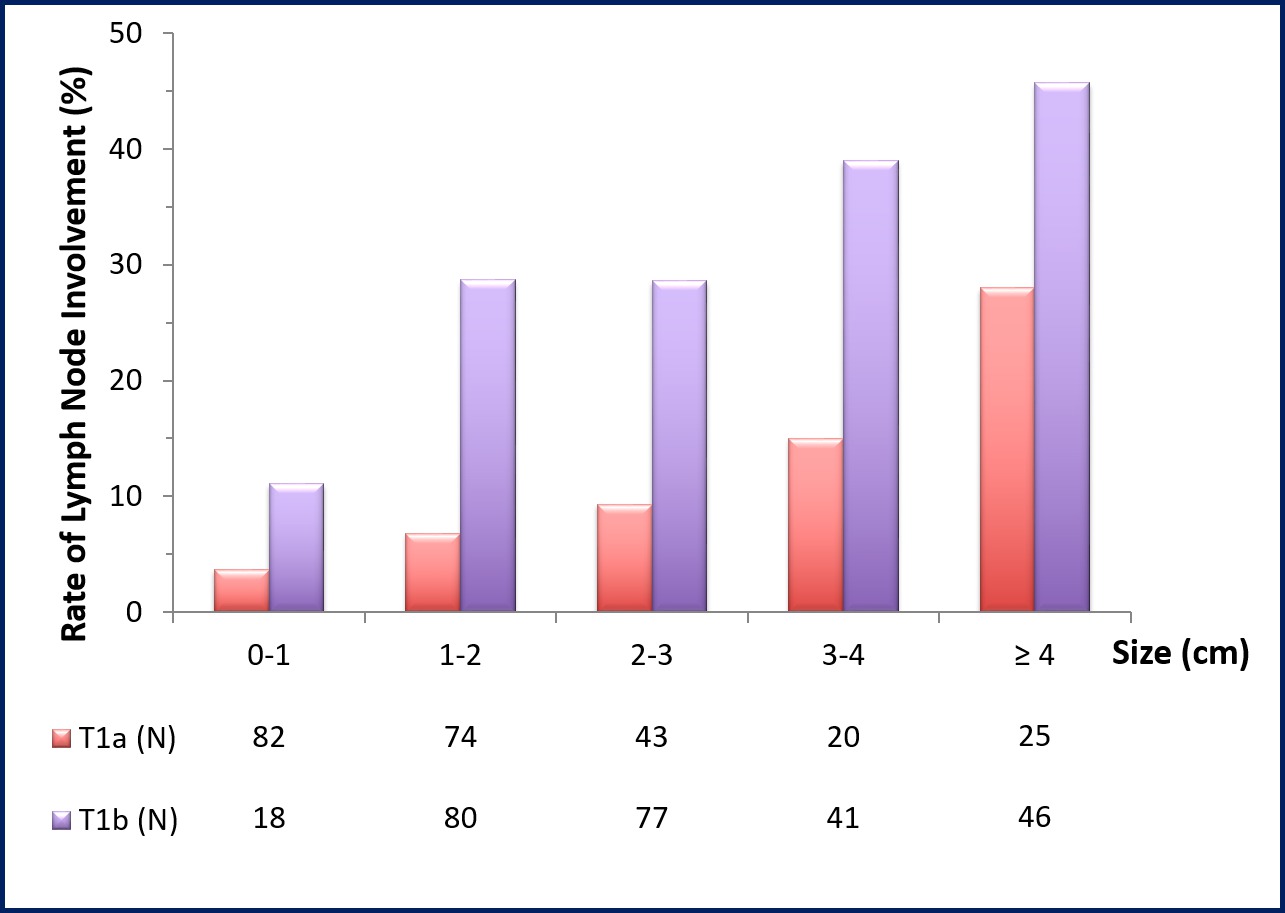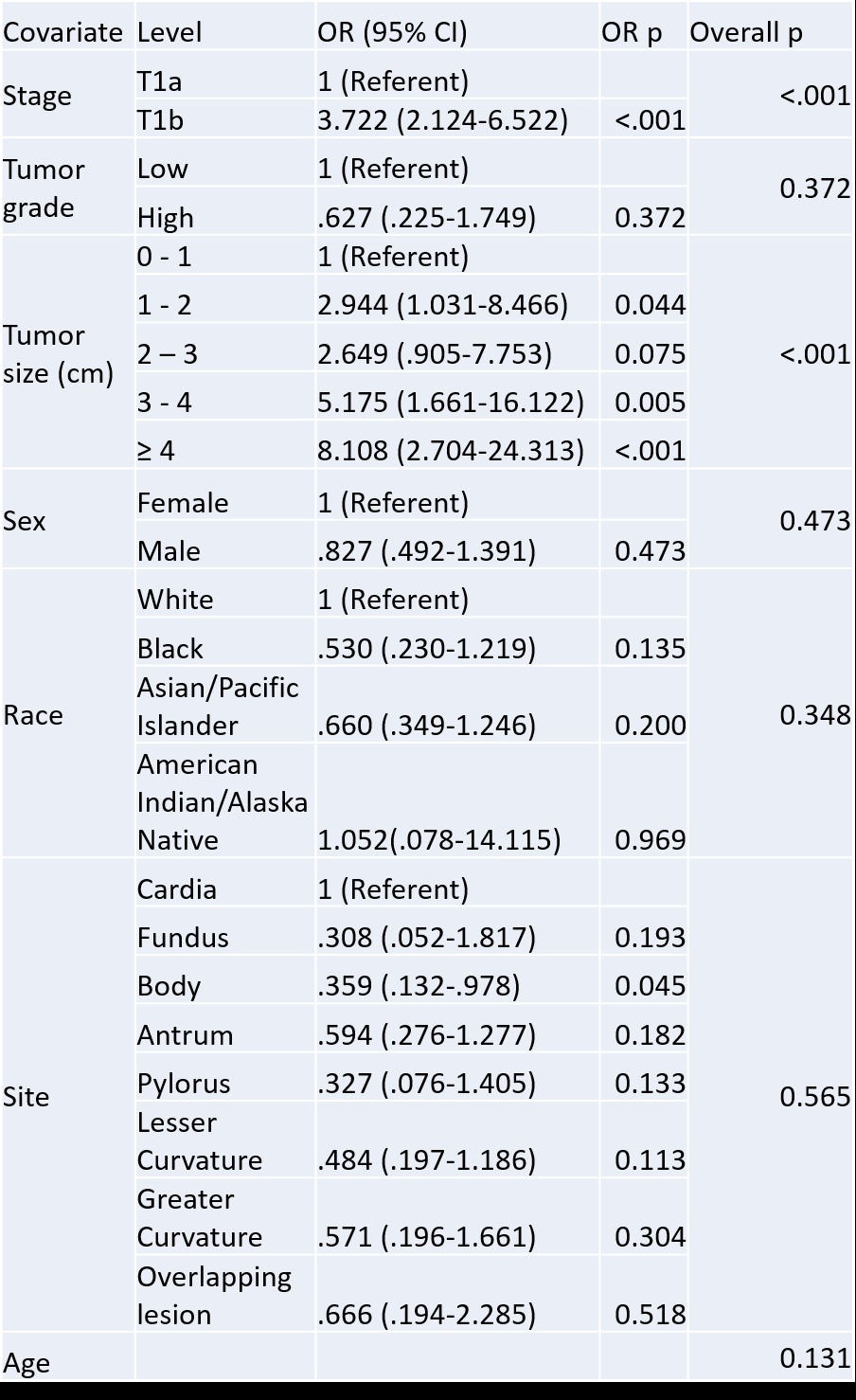
|
 |
Back to 2017 Program and Abstracts
INCIDENCE, SURVIVAL, AND PREDICTORS OF LYMPH NODE METASTASIS IN EARLY STAGE GASTRIC SIGNET RING CELL CARCINOMAS IN THE UNITED STATES
Sridevi K. Pokala*1, Zhengjia Chen1, Parit Mekaroonkamol1, Anthony Gamboa2, Steven Keilin1, Qiang Cai1, Field F. Willingham1
1Emory University School of Medicine, Atlanta, GA; 2Vanderbilt University School of Medicine, Nashville, TN
Introduction: The use of endoscopic resection in the management of early stage gastric signet ring cell carcinoma has been proposed in Eastern countries. The role for endoscopic resection for gastric signet ring cell carcinoma in the US has not been defined.
Methods: Cases of gastric signet ring cell carcinoma were extracted from the national SEER database for the years 2004-2013. Cases with unknown tumor characteristics, unknown patient characteristics, metastatic disease, neoadjuvant radiation, and lack of surgical resection or microscopic evaluation of lymph nodes were excluded. Early stage disease was defined as Tis, T1a, T1b, and T1 NOS. Relative survival was calculated using the Kaplan-Meier method. Univariate and multivariate analysis were performed to identify predictors of lymph node involvement.
Results: 10,624 cases of gastric signet cell carcinoma were abstracted from the SEER database from 2004-2013. After exclusions, 1,332 cases were included for incidence analysis. The incidence of gastric signet ring cell carcinoma from 2004-2013 was .198 per 100,000 person-years for all stages and .094 per 100,000 person-years for early stages. 1,099 cases were included in the survival analysis. The 5-year survival was 88.6% for early stage tumors and 27.6% for advanced stage tumors. 511 cases were analyzed for predictors of nodal metastasis. On multivariate analysis, T1b tumors had a higher rate of lymph node spread than T1a (OR 3.7, 95% CI 2.1-6.5 p < .001) and tumors ≥4 cm had a higher rate than tumors <1 cm (OR 8.1 95% CI 2.7-24.3, p<.001). Grade was not a significant predictor of nodal metastasis (p=.372). Of T1a tumors, 3.7% at 0-1cm, 6.8% at 1-2cm, 9.3% at 2-3cm, 15.0% at 3-4cm and 28% at ≥ 4cm had nodal metastasis (p<.05). Of T1b tumors, 11.1% at 0-1cm, 28.7% at 1-2cm, 28.6% at 2-3cm, 39.0% at 3-4cm and 45.7% at ≥ 4cm had nodal metastasis (p=.055).
Conclusion: Signet ring cell carcinoma is an aggressive cancer, however, the 5-year survival for early stage tumors in the US population was greater than 85% and T1a tumors < 3 cm in size had less than a 10% rate of lymph node metastasis. For highly selected patients, it may be possible to consider organ-sparing endoscopic resection approaches in US cohorts.

Rate of nodal metastasis in gastric signet ring cell carcinoma by stage and tumor size

Multivariate association between variables and nodal metastasis in gastric signet ring cell carcinoma
Back to 2017 Program and Abstracts
|



